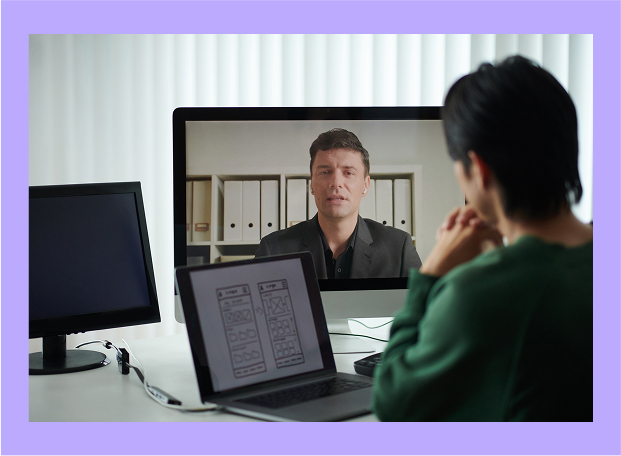As global interactions become increasingly complex, the nuanced landscape of language exchange evolves rapidly. For businesses, educators, and cultural organizations operating at the intersection of Japan and France, understanding the latest developments in French Japanese communication is crucial. The year 2025 is poised to be particularly significant, marked by strengthening bilateral ties and technological advancements that are reshaping how these languages interact.
Navigating the intricacies of translating between French and Japanese requires not only linguistic accuracy but also cultural sensitivity and efficiency. Tools like Doctranslate.io play a vital role in bridging this gap, particularly for critical documents where precision and context are paramount. This article explores the key trends and challenges impacting French Japanese language needs looking ahead to 2025.
The Challenge: Bridging Growing French Japanese Interactions
Japan and France share what is officially termed a ‘special partnership,’ underpinned by shared values and deepening relations, particularly in response to the complexities of the current global landscape. This relationship is set for further vitalization with major events on the horizon, including the Paris Olympics and the 2025 Osaka-Kansai Expo, as outlined in a roadmap for Japan-France cooperation extending to 2027, covering diverse fields from economy and culture to education and research, according to The Current State of Japan-France International Exchange.
This increased interaction, however, presents significant language challenges. While global online English proficiency saw a decline between 2022 and 2025, languages like Japanese and French experienced increases during the same period, as noted in Localization Trends Shaping 2025. This underscores that relying solely on English is insufficient for effective cross-cultural engagement between these two nations. The need for direct, accurate communication in both Japanese and French is more critical than ever.
Furthermore, traditional language education faces its own hurdles. Educators in Japan are actively seeking ways to revitalize French language learning, addressing challenges to make it more appealing and relevant for students, indicating a sense of urgency regarding its future in the country, according to フランス語教育の現在とこれから ―「できること」「したいこと」. This suggests that while official ties strengthen, foundational language skills acquisition needs support and modernization.
The Solution: Technology and Effective Localization
Addressing the growing need for reliable French Japanese communication requires embracing modern solutions. Technology, particularly advancements in Artificial Intelligence, is poised to play a transformative role. Multilingual AI, especially Large Language Models (LLMs), is expected to significantly enhance translation efficiency and accuracy in 2025, as highlighted in Localization Trends Shaping 2025.
For businesses, effective localization is paramount, particularly when engaging with the Japanese market, which is substantial (estimated at $4 trillion). Japan’s historically limited English exposure means content must resonate in Japanese to be successful. The success of platforms like Steam, which saw significant growth in the Japanese PC gaming market (25% in 2023) and a large increase in Japanese users (over 150% since 2019, surpassing French users) partly due to comprehensive localization, exemplifies this need, according to Japanese Localization: The Key to Reaching a $4 Trillion Market. Localization involves navigating deep linguistic intricacies and cultural nuances that go beyond simple word-for-word translation.
This is where specialized tools become invaluable. Services focused on document translation, like Doctranslate.io, offer a practical solution for handling formal, technical, or business documents. They leverage advanced technology to provide accurate translations while often allowing for control over tone and domain, crucial for maintaining professionalism and clarity in official communication.
Implementation: Strategies for Seamless French Japanese Exchange
Moving towards 2025, individuals and organizations engaged in French Japanese exchange should implement strategies that leverage technology and prioritize cultural accuracy. The French Chamber of Commerce in Japan (CCI France Japon), for instance, is actively facilitating business ties, reporting over 1,400 business matching instances in 2024 and outlining plans for increased member satisfaction and acquisition pace in their outlook for 2025, as reviewed in 2025年度 在日フランス商工会議所通常総会、開催を振り返る. This level of activity generates significant demand for accurate translation of contracts, reports, presentations, and communication materials.
Practical implementation involves several steps:
- Assess Specific Needs: Identify whether the requirement is for casual conversation, formal documents, marketing content, or technical manuals. Each demands a different approach and level of expertise.
- Utilize Specialized Tools: For document-heavy tasks, platforms designed specifically for document translation, such as Doctranslate.io, can save significant time and ensure consistency and accuracy, especially when a serious or professional tone is required.
- Prioritize Cultural Nuance: Recognize that effective communication goes beyond language. Context, customs, and business etiquette must be considered. While AI improves, human review or culturally aware tools remain important for high-stakes content.
- Stay Updated on Technology: Keep abreast of developments in AI and translation technology. The landscape is changing rapidly, and new features can offer improved efficiency and quality.
- Invest in Human Expertise (Where Needed): For highly creative content like marketing or sensitive negotiations, professional translators or consultants with deep cultural understanding are irreplaceable. The goal is often a hybrid approach combining technology for efficiency with human oversight for critical elements.
By adopting these strategies, stakeholders can ensure that language barriers do not impede the significant opportunities presented by the strengthening Japan-France partnership in 2025.
Conclusion
The trajectory for French Japanese interactions in 2025 points towards increased volume and complexity, driven by bilateral agreements, major events, and active business engagement. While challenges in traditional language learning persist, the rise of sophisticated translation technology offers powerful solutions for bridging linguistic and cultural divides.
For anyone involved in this dynamic exchange, from international businesses to academic researchers, leveraging effective translation tools is no longer optional, but a necessity. By understanding the landscape and utilizing platforms like Doctranslate.io for reliable document translation, you can ensure your communication is not only accurate but also culturally appropriate, paving the way for successful engagement in the evolving French-Japanese relationship.


Leave a Reply